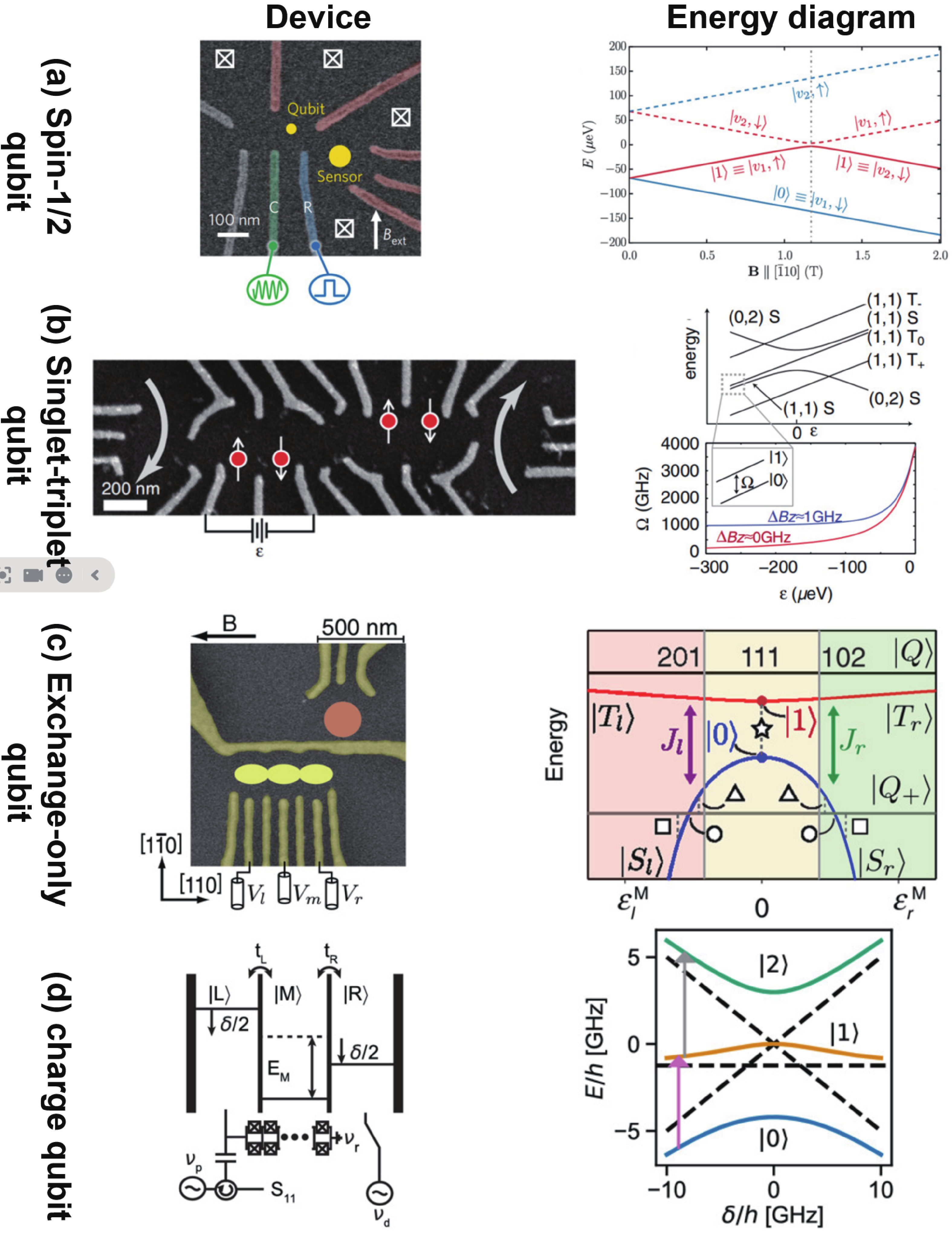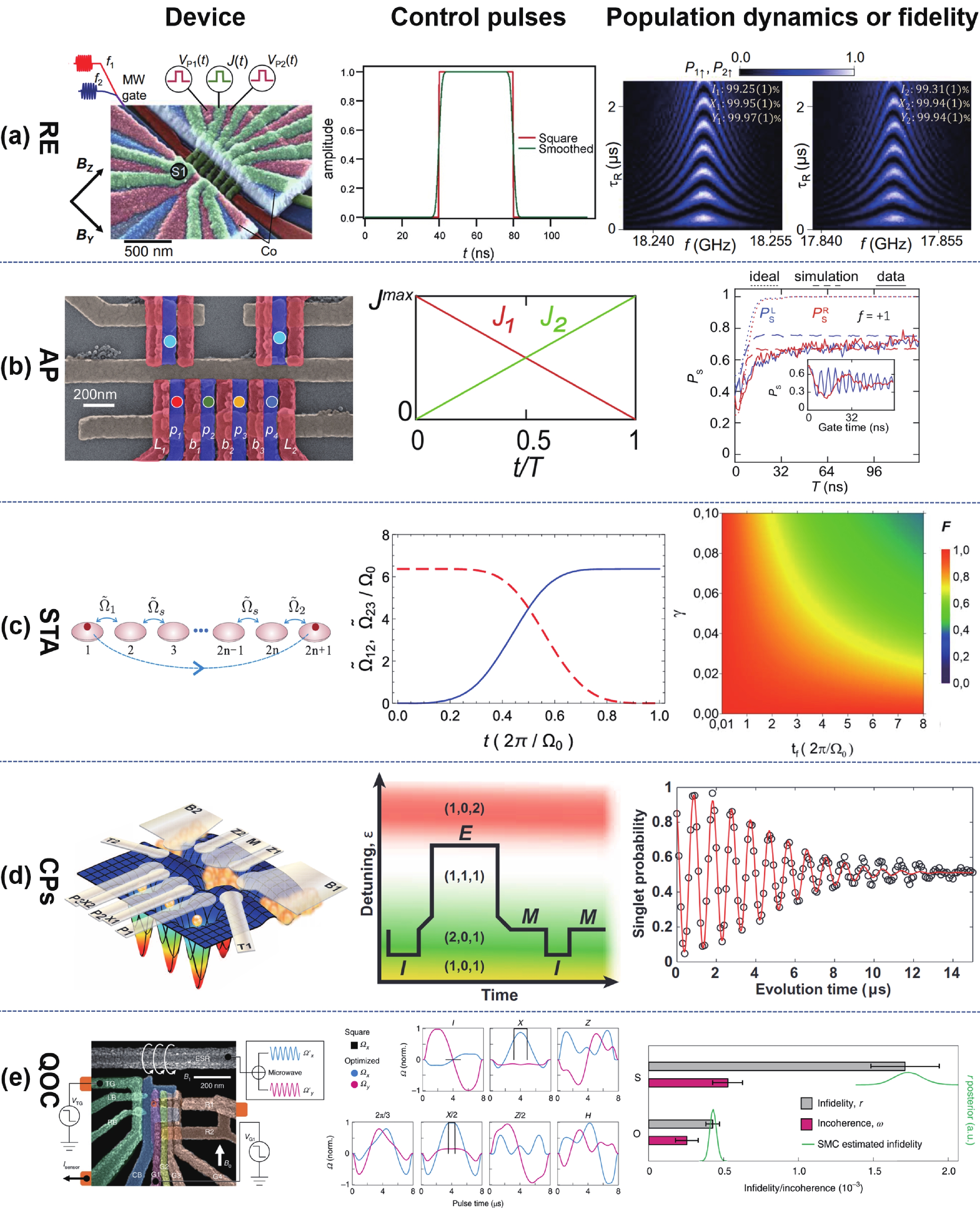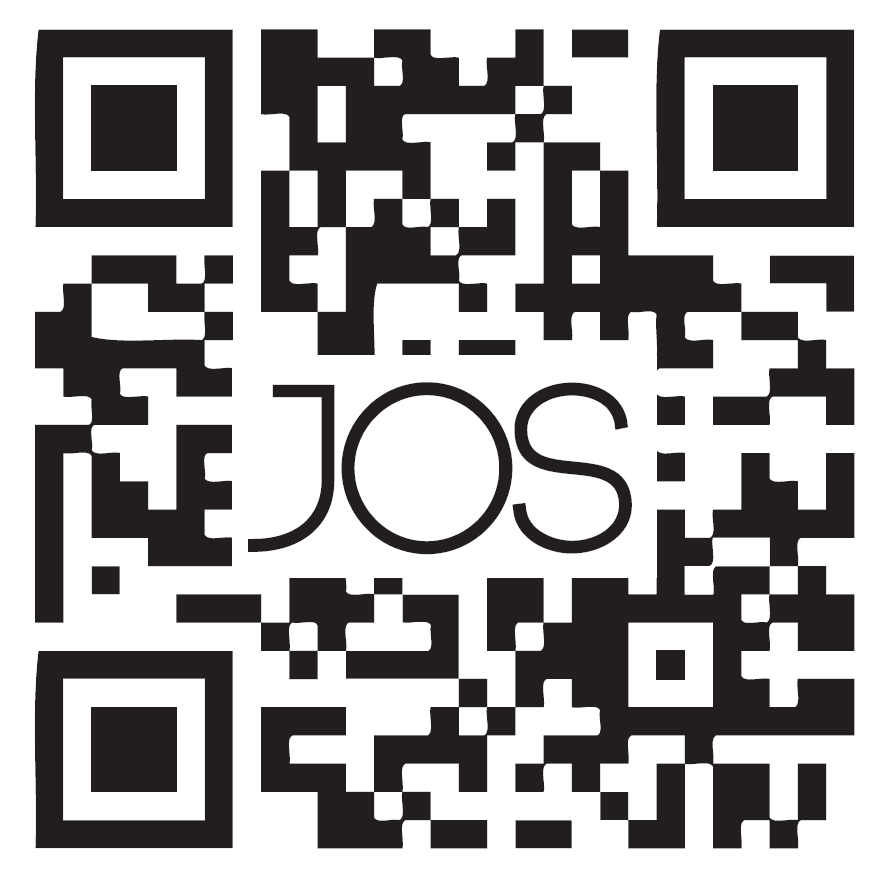| Citation: |
Jia-Ao Peng, Chu-Dan Qiu, Wen-Long Ma, Jun-Wei Luo. Diverse methods and practical aspects in controlling single semiconductor qubits: a review[J]. Journal of Semiconductors, 2026, In Press. doi: 10.1088/1674-4926/24120040
****
J A Peng, C D Qiu, W L Ma, and J W Luo, Diverse methods and practical aspects in controlling single semiconductor qubits: a review[J]. J. Semicond., 2026, 47(1), 011101 doi: 10.1088/1674-4926/24120040
|
Diverse methods and practical aspects in controlling single semiconductor qubits: a review
DOI: 10.1088/1674-4926/24120040
CSTR: 32376.14.1674-4926.24120040
More Information-
Abstract
Quantum control allows a wide range of quantum operations employed in molecular physics, nuclear magnetic resonance and quantum information processing. Thanks to the existing microelectronics industry, semiconducting qubits, where quantum information is encoded in spin or charge degree freedom of electrons or nuclei in semiconductor quantum dots, constitute a highly competitive candidate for scalable solid-state quantum technologies. In quantum information processing, advanced control techniques are needed to realize quantum manipulations with both high precision and noise resilience. In this review, we first introduce the basics of various widely-used control methods, including resonant excitation, adabatic passage, shortcuts to adiabaticity, composite pulses, and quantum optimal control. Then we review the practical aspects in applying these methods to realize accurate and robust quantum gates for single semiconductor qubits, such as Loss–DiVincenzo spin qubit, spinglet-triplet qubit, exchange-only qubit and charge qubit. -
References
[1] Rabitz H, de Vivie-Riedle R, Motzkus M, et al. Whither the future of controlling quantum phenomena? Science, 2000, 288(5467), 824 doi: 10.1126/science.288.5467.824[2] Peirce A P, Dahleh M A, Rabitz H. Optimal control of quantum-mechanical systems: Existence, numerical approximation, and applications. Phys Rev A Gen Phys, 1988, 37(12), 4950 doi: 10.1103/PhysRevA.37.4950[3] Shapiro M, Brumer P. Quantum control of molecular processes. Wiley, 2003 doi: 10.1002/9783527639700[4] Koch C P, Lemeshko M, Sugny D. Quantum control of molecular rotation. Rev Mod Phys, 2019, 91(3), 035005 doi: 10.1103/RevModPhys.91.035005[5] Ota Y, Kondo Y. Composite pulses in NMR as nonadiabatic geometric quantum gates. Phys Rev A, 2009, 80(2), 024302 doi: 10.1103/PhysRevA.80.024302[6] Lapert M, Zhang Y, Janich M A, et al. Exploring the physical limits of saturation contrast in magnetic resonance imaging. Sci Rep, 2012, 2, 589 doi: 10.1038/srep00589[7] Nielsen M A, Chuang I L. Quantum computation and quantum information. Cambridge: Cambridge University Press, 2010 doi: 10.1017/s0960129507006317[8] Van-Damme L, Schraft D, Genov G T, et al. Robust not gate by single-shot-shaped pulses: Demonstration of the efficiency of the pulses in rephasing atomic coherences. Phys Rev A, 2017, 96(2), 022309 doi: 10.1103/PhysRevA.96.022309[9] Ivanov S S, Vitanov N V. Composite two-qubit gates. Phys Rev A, 2015, 92(2), 022333 doi: 10.1103/PhysRevA.92.022333[10] Cohen I, Rotem A, Retzker A. Refocusing two-qubit-gate noise for trapped ions by composite pulses. Phys Rev A, 2016, 93(3), 032340 doi: 10.1103/PhysRevA.93.032340[11] Morton J J L, Tyryshkin A M, Ardavan A, et al. High fidelity single qubit operations using pulsed electron paramagnetic resonance. Phys Rev Lett, 2005, 95(20), 200501 doi: 10.1103/PhysRevLett.95.200501[12] Levitt M H. Symmetrical composite pulse sequences for NMR population inversion. II. Compensation of resonance offset. J Magn Reson 1969, 1982, 50(1), 95 doi: 10.1016/0022-2364(82)90035-X[13] Freeman R, Kempsell S P, Levitt M H. Radiofrequency pulse sequences which compensate their own imperfections. J Magn Reson 1969, 1980, 38(3), 453 doi: 10.1016/0022-2364(80)90327-3[14] Torosov B, Vitanov N. Arbitrarily accurate twin composite π-pulse sequences. Phys Rev A, 2012, 97, 043408 doi: 10.1103/PhysRevA.97.043408[15] Dou F Q, Cao H, Liu J, et al. High-fidelity composite adiabatic passage in nonlinear two-level systems. Phys Rev A, 2016, 93(4), 043419 doi: 10.1103/PhysRevA.93.043419[16] Sola I R, Chang B Y, Malinovskaya S A, et al. Quantum control in multilevel systems. Advances In Atomic, Molecular, and Optical Physics. Amsterdam: Elsevier, 2018, 151 doi: 10.1016/bs.aamop.2018.02.003[17] Stefanatos D, Paspalakis E. A shortcut tour of quantum control methods for modern quantum technologies. Europhys Lett, 2020, 132(6), 60001 doi: 10.1209/0295-5075/132/60001[18] Guéry-Odelin D, Ruschhaupt A, Kiely A, et al. Shortcuts to adiabaticity: Concepts, methods, and applications. Rev Mod Phys, 2019, 91(4), 045001 doi: 10.1103/RevModPhys.91.045001[19] Mahesh T S, Batra P, Ram M H. Quantum optimal control: Practical aspects and diverse methods. J Indian Inst Sci, 2023, 103(2), 591 doi: 10.1007/s41745-022-00311-2[20] Barthelemy P, Vandersypen L M K. Quantum dot systems: A versatile platform for quantum simulations. Ann Der Phys, 2013, 525(10/11), 808 doi: 10.1002/andp.201300124[21] Chern M, Kays J C, Bhuckory S, et al. Sensing with photoluminescent semiconductor quantum dots. Methods Appl Fluoresc, 2019, 7(1), 012005 doi: 10.1088/2050-6120/aaf6f8[22] Scappucci G, Kloeffel C, Zwanenburg F A, et al. The germanium quantum information route. Nat Rev Mater, 2021, 6, 926 doi: 10.1038/s41578-020-00262-z[23] Loss D, DiVincenzo D P. Quantum computation with quantum dots. Phys Rev A, 1998, 57(1), 120 doi: 10.1103/PhysRevA.57.120[24] Levy J. Universal quantum computation with spin-1/2 pairs and Heisenberg exchange. Phys Rev Lett, 2002, 89(14), 147902 doi: 10.1103/PhysRevLett.89.147902[25] Bacon D, Kempe J, Lidar D A, et al. Universal fault-tolerant quantum computation on decoherence-free subspaces. Phys Rev Lett, 2000, 85(8), 1758 doi: 10.1103/PhysRevLett.85.1758[26] DiVincenzo D P, Bacon D, Kempe J, et al. Universal quantum computation with the exchange interaction. Nature, 2000, 408(6810), 339 doi: 10.1038/35042541[27] Hayashi T, Fujisawa T, Cheong H D, et al. Coherent manipulation of electronic states in a double quantum dot. Phys Rev Lett, 2003, 91(22), 226804 doi: 10.1103/PhysRevLett.91.226804[28] Shi Z, Simmons C B, Prance J R, et al. Fast hybrid silicon double-quantum-dot qubit. Phys Rev Lett, 2012, 108(14), 140503 doi: 10.1103/PhysRevLett.108.140503[29] Hanson R, Kouwenhoven L P, Petta J R, et al. Spins in few-electron quantum dots. Rev Mod Phys, 2007, 79(4), 1217 doi: 10.1103/RevModPhys.79.1217[30] Bluhm H, Foletti S, Neder I, et al. Dephasing time of GaAs electron-spin qubits coupled to a nuclear bath exceeding 200 μs. Nat Phys, 2011, 7, 109 doi: 10.1038/nphys1856[31] Maune B M, Borselli M G, Huang B, et al. Coherent singlet-triplet oscillations in a silicon-based double quantum dot. Nature, 2012, 481(7381), 344 doi: 10.1038/nature10707[32] Kloeffel C, Loss D. Prospects for spin-based quantum computing in quantum dots. Annu Rev Condens Matter Phys, 2013, 4, 51 doi: 10.1146/annurev-conmatphys-030212-184248[33] Chatterjee A, Stevenson P, De Franceschi S, et al. Semiconductor qubits in practice. Nat Rev Phys, 2021, 3(3), 157 doi: 10.1038/s42254-021-00283-9[34] Burkard G, Ladd T D, Pan A, et al. Semiconductor spin qubits. Rev Mod Phys, 2023, 95(2), 025003 doi: 10.1103/RevModPhys.95.025003[35] De Michielis M, Ferraro E, Prati E, et al. Silicon spin qubits from laboratory to industry. J Phys D: Appl Phys, 2023, 56(36), 363001 doi: 10.1088/1361-6463/acd8c7[36] Bayer M, Hawrylak P, Hinzer K, et al. Coupling and entangling of quantum states in quantum dot molecules. Science, 2001, 291(5503), 451 doi: 10.1126/science.291.5503.451[37] Watson T F, Philips S G J, Kawakami E, et al. A programmable two-qubit quantum processor in silicon. Nature, 2018, 555(7698), 633 doi: 10.1038/nature25766[38] Jelezko F, Gaebel T, Popa I, et al. Observation of coherent oscillation of a single nuclear spin and realization of a two-qubit conditional quantum gate. Phys Rev Lett, 2004, 93(13), 130501 doi: 10.1103/PhysRevLett.93.130501[39] Pfender M, Aslam N, Simon P, et al. Protecting a diamond quantum memory by charge state control. Nano Lett, 2017, 17(10), 5931 doi: 10.1021/acs.nanolett.7b01796[40] Ghosh J, Geller M R. Controlled-not gate with weakly coupled qubits: Dependence of fidelity on the form of interaction. Phys Rev A, 2010, 81(5), 052340 doi: 10.1103/PhysRevA.81.052340[41] Ramsey N F. A molecular beam resonance method with separated oscillating fields. Phys Rev, 1950, 78(6), 695 doi: 10.1103/PhysRev.78.695[42] Bulaev D V, Loss D. Electric dipole spin resonance for heavy holes in quantum dots. Phys Rev Lett, 2007, 98(9), 097202 doi: 10.1103/PhysRevLett.98.097202[43] Vandersypen L M K, Chuang I L. NMR techniques for quantum control and computation. Rev Mod Phys, 2005, 76(4), 1037 doi: 10.1103/RevModPhys.76.1037[44] Albash T, Lidar D A. Adiabatic quantum computation. Rev Mod Phys, 2018, 90, 015002 doi: 10.1103/RevModPhys.90.015002[45] Bacon D, Flammia S T. Adiabatic gate teleportation. Phys Rev Lett, 2009, 103(12), 120504 doi: 10.1103/PhysRevLett.103.120504[46] Greentree A D, Cole J H, Hamilton A R, et al. Coherent electronic transfer in quantum dot systems using adiabatic passage. Phys Rev B, 2004, 70(23), 235317 doi: 10.1103/PhysRevB.70.235317[47] Vitanov N V, Halfmann T, Shore B W, et al. Laser-induced population transfer by adiabatic passage techniques. Annu Rev Phys Chem, 2001, 52, 763 doi: 10.1146/annurev.physchem.52.1.763[48] Allen L, Eberly J H. Optical resonance and two-level atoms. New York: Wiley, 1975[49] Bergmann K, Theuer H, Shore B W. Coherent population transfer among quantum states of atoms and molecules. Rev Mod Phys, 1998, 70(3), 1003 doi: 10.1103/RevModPhys.70.1003[50] Fewell M P, Shore B W, Bergmann K. Coherent population transfer among three states: Full algebraic solutions and the relevance of non adiabatic processes to transfer by delayed pulses. Aust J Phys, 1997, 50(2), 281 doi: 10.1071/P96071[51] Oreg J, Hioe F T, Eberly J H. Adiabatic following in multilevel systems. Phys Rev A, 1984, 29(2), 690 doi: 10.1103/PhysRevA.29.690[52] Yatsenko L P, Guérin S, Jauslin H R. Topology of adiabatic passage. Phys Rev A, 2002, 65(4), 043407 doi: 10.1103/PhysRevA.65.043407[53] Guérin S, Yatsenko L P, Jauslin H R. Dynamical resonances and the topology of the multiphoton adiabatic passage. Phys Rev A, 2001, 63(3), 031403 doi: 10.1103/PhysRevA.63.031403[54] Chelkowski S, Bandrauk A D. Raman chirped adiabatic passage: A new method for selective excitation of high vibrational states. J Raman Spectrosc, 1997, 28(6), 459 doi: 10.1002/(SICI)1097-4555(199706)28:6<459::AID-JRS124>3.0.CO;2-Y[55] Yatsenko L P, Shore B W, Halfmann T, et al. Source of metastable H(2s) atoms using the Stark chirped rapid-adiabatic-passage technique. Phys Rev A, 1999, 60(6), R4237 doi: 10.1103/PhysRevA.60.R4237[56] Rickes T, Yatsenko L P, Steuerwald S, et al. Efficient adiabatic population transfer by two-photon excitation assisted by a laser-induced Stark shift. J Chem Phys, 2000, 113(2), 534 doi: 10.1063/1.481829[57] Vasilev G S, Vitanov N V. Coherent excitation of a two-state system by a linearly chirped Gaussian pulse. J Chem Phys, 2005, 123(17), 174106 doi: 10.1063/1.2090260[58] Gray H R, Whitley R M, Stroud C R. Coherent trapping of atomic populations. Opt Lett, 1978, 3(6), 218 doi: 10.1364/OL.3.000218[59] Shore B W. Pre-history of the concepts underlying stimulated Raman adiabatic passage(STIRAP). Acta Physica Slovaca, 2013, 6(63), 361 doi: 10.2478/apsrt-2013-0006[60] Shore B. The theory of coherent atomic excitation. Fusion Technol, 1991, 19(3P1), 576 doi: 10.13182/FST91-A29400[61] Chen X, Ruschhaupt A, Schmidt S, et al. Fast optimal frictionless atom cooling in harmonic traps: Shortcut to adiabaticity. Phys Rev Lett, 2010, 104(6), 063002 doi: 10.1103/PhysRevLett.104.063002[62] Wu S L, Huang X L, Li H, et al. Adiabatic evolution of decoherence-free subspaces and its shortcuts. Phys Rev A, 2017, 96(4), 042104 doi: 10.1103/PhysRevA.96.042104[63] Albash T, Boixo S, Lidar D A, et al. Corrigendum: quantum adiabatic markovian master equations. New Journal of Physics, 2015, 17(12), 129501 doi: 10.1088/1367-2630/17/12/129501[64] Berry M V. Transitionless quantum driving. J Phys A: Math Theor, 2009, 42(36), 365303 doi: 10.1088/1751-8113/42/36/365303[65] Kang Y H, Chen Y H, Shi Z C, et al. Complete Bell-state analysis for superconducting-quantum-interference-device qubits with a transitionless tracking algorithm. Phys Rev A, 2017, 96(2), 022304 doi: 10.1103/PhysRevA.96.022304[66] Lewis H R, Leach P G L. A resonance formulation for invariants of particle motion in a one-dimensional time-dependent potential. Ann Phys, 1985, 164(1), 47 doi: 10.1016/0003-4916(85)90004-1[67] Kastberg A, Phillips W D, Rolston S L, et al. Adiabatic cooling of cesium to 700 nK in an optical lattice. Phys Rev Lett, 1995, 74(9), 1542 doi: 10.1103/PhysRevLett.74.1542[68] Kolodrubetz M, Sels D, Mehta P, et al. Geometry and non-adiabatic response in quantum and classical systems. Phys Rep, 2017, 697, 1 doi: 10.1016/j.physrep.2017.07.001[69] Kyoseva E, Greener H, Suchowski H. Detuning-modulated composite pulses for high-fidelity robust quantum control. Phys Rev A, 2019, 100(3), 032333 doi: 10.1103/PhysRevA.100.032333[70] Ichikawa T, Bando M, Kondo Y, et al. Designing robust unitary gates: Application to concatenated composite pulses. Phys Rev A, 2011, 84(6), 062311 doi: 10.1103/PhysRevA.84.062311[71] Wang X, Bishop L S, Barnes E, et al. Robust quantum gates for singlet-triplet spin qubits using composite pulses. Phys Rev A, 2014, 89(2), 022310 doi: 10.1103/PhysRevA.89.022310[72] Genov G T, Schraft D, Halfmann T, et al. Correction of arbitrary field errors in population inversion of quantum systems by universal composite pulses. Phys Rev Lett, 2014, 113(4), 043001 doi: 10.1103/PhysRevLett.113.043001[73] Low G H, Yoder T J, Chuang I L. Methodology of resonant equiangular composite quantum gates. Phys Rev X, 2016, 6(4), 041067 doi: 10.1103/PhysRevX.6.041067[74] Schraft D, Halfmann T, Genov G T, et al. Experimental demonstration of composite adiabatic passage. Phys Rev A, 2013, 88(6), 063406 doi: 10.1103/PhysRevA.88.063406[75] Torosov B T, Shore B W, Vitanov N V. Coherent control techniques for two-state quantum systems: A comparative study. Phys Rev A, 2021, 103(3), 033110 doi: 10.1103/PhysRevA.103.033110[76] Torosov B T, Drewsen M, Vitanov N V. Efficient and robust chiral resolution by composite pulses. Phys Rev A, 2020, 101(6), 063401 doi: 10.1103/PhysRevA.101.063401[77] Pontryagin L S. Mathematical theory of optimal processes. London: Routledge, 2018 doi: 10.1201/9780203749319[78] Tomlinson B L, Hill H D W. Fourier synthesized excitation of nuclear magnetic resonance with application to homonuclear decoupling and solvent line suppression. J Chem Phys, 1973, 59(4), 1775 doi: 10.1063/1.1680263[79] Rembold P, Oshnik N, Müller M M, et al. Introduction to quantum optimal control for quantum sensing with nitrogen-vacancy centers in diamond. AVS Quantum Sci, 2020, 2(2), 024701 doi: 10.1116/5.0006785[80] Koch C P, Boscain U, Calarco T, et al. Quantum optimal control in quantum technologies. Strategic report on current status, visions and goals for research in Europe. EPJ Quantum Technol, 2022, 9(1), 19 doi: 10.1140/epjqt/s40507-022-00138-x[81] Petruhanov V N, Pechen A N. GRAPE optimization for open quantum systems with time-dependent decoherence rates driven by coherent and incoherent controls. J Phys A: Math Theor, 2023, 56(30), 305303 doi: 10.1088/1751-8121/ace13f[82] Carolan E, Çakmak B, Campbell S. Robustness of controlled Hamiltonian approaches to unitary quantum gates. Phys Rev A, 2023, 108(2), 022423 doi: 10.1103/PhysRevA.108.022423[83] Ansel Q, Dionis E, Arrouas F, et al. Introduction to theoretical and experimental aspects of quantum optimal control. J Phys B: At Mol Opt Phys, 2024, 57(13), 133001 doi: 10.1088/1361-6455/ad46a5[84] Petruhanov V N, Pechen A N. Optimal control for state preparation in two-qubit open quantum systems driven by coherent and incoherent controls via GRAPE approach. Int J Mod Phys A, 2022, 37(20n21), 2243017 doi: 10.1142/S0217751X22430175[85] Preti F, Calarco T, Torres J M, et al. Optimal two-qubit gates in recurrence protocols of entanglement purification. Phys Rev A, 2022, 106(2), 022422 doi: 10.1103/PhysRevA.106.022422[86] Fortunato E M, Pravia M A, Boulant N, et al. Design of strongly modulating pulses to implement precise effective Hamiltonians for quantum information processing. J Chem Phys, 2002, 116(17), 7599 doi: 10.1063/1.1465412[87] Černý V. Thermodynamical approach to the traveling salesman problem: An efficient simulation algorithm. J Optim Theory Appl, 1985, 45(1), 41 doi: 10.1007/BF00940812[88] Khaneja N, Reiss T, Kehlet C, et al. Optimal control of coupled spin dynamics: Design of NMR pulse sequences by gradient ascent algorithms. J Magn Reson, 2005, 172(2), 296 doi: 10.1016/j.jmr.2004.11.004[89] Machnes S, Assémat E, Tannor D, et al. Tunable, flexible, and efficient optimization of control pulses for practical qubits. Phys Rev Lett, 2018, 120(15), 150401 doi: 10.1103/PhysRevLett.120.150401[90] Krotov V F. Global methods in optimal control theory. Advances in Nonlinear Dynamics and Control: A Report from Russia. Boston, MA: Birkhäuser Boston, 1996, 74,121 doi: 10.1007/978-1-4612-0349-0_3[91] Tannús A, Garwood M. Adiabatic pulses. NMR in Biomedicine: An International Journal Devoted to the Development and Application of Magnetic Resonance In Vivo, 1997, 10(8), 423 doi: 10.1002/(SICI)1099-1492(199712)10:8<423::AID-NBM488>3.0.CO;2-X[92] Anandan J. The geometric phase. Nature, 1992, 360(6402), 307 doi: 10.1038/360307a0[93] Isidori A. Local decompositions of control systems. Nonlinear Control Systems. London: Springer London, 1995, 1 doi: 10.1007/BFb0006373[94] Hush M R. Machine learning for quantum physics. Science, 2017, 355(6325), 580 doi: 10.1126/science.aam6564[95] Bukov M, Day A G R, Sels D, et al. Reinforcement learning in different phases of quantum control. Phys Rev X, 2018, 8(3), 031086 doi: 10.1103/PhysRevX.8.031086[96] Mehta P, Bukov M, Wang C H, et al. A high-bias, low-variance introduction to Machine Learning for physicists. Phys Rep, 2019, 810, 1 doi: 10.1016/j.physrep.2019.03.001[97] Carleo G, Cirac I, Cranmer K, et al. Machine learning and the physical sciences. Rev Mod Phys, 2019, 91(4), 045002 doi: 10.1103/RevModPhys.91.045002[98] Ho T S, Rabitz H. Why do effective quantum controls appear easy to find? J Photochem Photobiol A Chem, 2006, 180(3), 226 doi: 10.1016/j.jphotochem.2006.03.038[99] Larocca M, Calzetta E, Wisniacki D A. Exploiting landscape geometry to enhance quantum optimal control. Phys Rev A, 2020, 101(2), 023410 doi: 10.1103/PhysRevA.101.023410[100] Zhang X, Li H, Wang K, et al. Qubits based on semiconductor quantum dots. Chin Phys B, 2018, 27(2), 131 doi: 10.1088/1674-1056/27/2/020305[101] Hile S J, Fricke L, House M G, et al. Addressable electron spin resonance using donors and donor molecules in silicon. Sci Adv, 2018, 4(7), eaaq1459 doi: 10.1126/sciadv.aaq1459[102] Koppens F L, Buizert C, Tielrooij K J, et al. Driven coherent oscillations of a single electron spin in a quantum dot. Nature, 2006, 442(7104), 766 doi: 10.1038/nature05065[103] Muhonen J T, Dehollain J P, Laucht A, et al. Storing quantum information for 30 seconds in a nanoelectronic device. Nat Nanotechnol, 2014, 9(12), 986 doi: 10.1038/nnano.2014.211[104] Veldhorst M, Hwang J C C, Yang C H, et al. An addressable quantum dot qubit with fault-tolerant control-fidelity. Nature Nanotech, 2014, 9(12), 981 doi: 10.1038/nnano.2014.216[105] Petta J R, Johnson A C, Taylor J M, et al. Coherent manipulation of coupled electron spins in semiconductor quantum dots. Science, 2005, 309(5744), 2180 doi: 10.1126/science.1116955[106] Nadj-Perge S, Frolov S M, Bakkers E M, et al. Spin-orbit qubit in a semiconductor nanowire. Nature, 2010, 468(7327), 1084 doi: 10.1038/nature09682[107] Corna A, Bourdet L, Maurand R, et al. Electrically driven electron spin resonance mediated by spin–valley–orbit coupling in a silicon quantum dot. NPJ Quantum Inf, 2018, 4, 6 doi: 10.1038/s41534-018-0059-1[108] Crippa A, Maurand R, Bourdet L, et al. Electrical spin driving by g-matrix modulation in spin-orbit qubits. Phys Rev Lett, 2018, 120(13), 137702 doi: 10.1103/PhysRevLett.120.137702[109] Kawakami E, Scarlino P, Ward D R, et al. Electrical control of a long-lived spin qubit in a Si/SiGe quantum dot. Nat Nanotechnol, 2014, 9(9), 666 doi: 10.1038/nnano.2014.153[110] Zajac D M, Sigillito A J, Russ M, et al. Resonantly driven CNOT gate for electron spins. Science, 2018, 359(6374), 439 doi: 10.1126/science.aao5965[111] Foletti S, Bluhm H, Mahalu D, et al. Universal quantum control of two-electron spin quantum bits using dynamic nuclear polarization. Nature Phys, 2009, 5(12), 903 doi: 10.1038/nphys1424[112] Malinowski F K, Martins F, Nissen P D, et al. Notch filtering the nuclear environment of a spin qubit. Nat Nanotechnol, 2017, 12(1), 16 doi: 10.1038/nnano.2016.170[113] Pla J J, Tan K Y, Dehollain J P, et al. A single-atom electron spin qubit in silicon. Nature, 2012, 489, 541 doi: 10.1038/nature11449[114] Yoneda J, Takeda K, Otsuka T, et al. A quantum-dot spin qubit with coherence limited by charge noise and fidelity higher than 99.9. Nat Nanotechnol, 2018, 13(2), 102 doi: 10.1038/s41565-017-0014-x[115] Bourdet L, Niquet Y M. All-electrical manipulation of silicon spin qubits with tunable spin-valley mixing. Phys Rev B, 2018, 97(15), 155433 doi: 10.1103/PhysRevB.97.155433[116] Nichol J M, Orona L A, Harvey S P, et al. High-fidelity entangling gate for double-quantum-dot spin qubits. NPJ Quantum Inf, 2017, 3, 3 doi: 10.1038/s41534-016-0003-1[117] Medford J, Beil J, Taylor J M, et al. Quantum-dot-based resonant exchange qubit. Phys Rev Lett, 2013, 111(5), 050501 doi: 10.1103/PhysRevLett.111.050501[118] Kratochwil B, Koski J V, Landig A J, et al. Charge qubit in a triple quantum dot with tunable coherence. Phys Rev Research, 2021, 3, 013171 doi: 10.1103/PhysRevResearch.3.013171[119] Zhang X, Li H O, Cao G, et al. Semiconductor quantum computation. Natl Sci Rev, 2019, 6(1), 32 doi: 10.1093/nsr/nwy153[120] Khomitsky D V, Gulyaev L V, Sherman E Y. Spin dynamics in a strongly driven system: Very slow Rabi oscillations. Phys Rev B, 2012, 85(12), 125312 doi: 10.1103/PhysRevB.85.125312[121] Khomitsky D V, Lavrukhina E A, Sherman E Y. Electric dipole spin resonance at shallow donors in quantum wires. Phys Rev B, 2019, 99, 014308 doi: 10.1103/PhysRevB.99.014308[122] Khomitsky D V, Lavrukhina E A, Sherman E Y. Spin rotation by resonant electric field in few-level quantum dots: Floquet dynamics and tunneling. Phys Rev Applied, 2020, 14, 014090 doi: 10.1103/PhysRevApplied.14.014090[123] Mills A R, Guinn C R, Gullans M J, et al. Two-qubit silicon quantum processor with operation fidelity exceeding 99%. Sci Adv, 2022, 8(14), eabn5130 doi: 10.1126/sciadv.abn5130[124] Srinivasa V, Levy J, Hellberg C S. Flying spin qubits: A method for encoding and transporting qubits within a dimerized Heisenberg spin-12 chain. Phys Rev B, 2007, 76(9), 094411 doi: 10.1103/PhysRevB.76.094411[125] Oh S, Shim Y P, Fei J J, et al. Resonant adiabatic passage with three qubits. Phys Rev A, 2013, 87(2), 022332 doi: 10.1103/PhysRevA.87.022332[126] Ban Y, Chen X, Kohler S, et al. Spin entangled state transfer in quantum dot arrays: Coherent adiabatic and speed-up protocols. Adv Quantum Tech, 2019, 2(10), 1900048 doi: 10.1002/qute.201900048[127] Fujita T, Baart T A, Reichl C, et al. Coherent shuttle of electron-spin states. NPJ Quantum Inf, 2017, 3, 22 doi: 10.1038/s41534-017-0024-4[128] Flentje H, Mortemousque P A, Thalineau R, et al. Coherent long-distance displacement of individual electron spins. Nat Commun, 2017, 8, 501 doi: 10.1038/s41467-017-00534-3[129] Nakajima T, Delbecq M R, Otsuka T, et al. Coherent transfer of electron spin correlations assisted by dephasing noise. Nat Commun, 2018, 9, 2133 doi: 10.1038/s41467-018-04544-7[130] Kandel Y P, Qiao H F, Fallahi S, et al. Adiabatic quantum state transfer in a semiconductor quantum-dot spin chain. Nat Commun, 2021, 12, 2156 doi: 10.1038/s41467-021-22416-5[131] Hohenester U, Fabian J, Troiani F. Adiabatic passage schemes in coupled semiconductor nanostructures. Opt Commun, 2006, 264(2), 426 doi: 10.1016/j.optcom.2006.01.064[132] Xu X D, Sun B, Berman P R, et al. Coherent population trapping of an electron spin in a single negatively charged quantum dot. Nature Phys, 2008, 4(9), 692 doi: 10.1038/nphys1054[133] Vitanov N V, Rangelov A A, Shore B W, et al. Stimulated Raman adiabatic passage in physics, chemistry, and beyond. Rev Mod Phys, 2017, 89, 015006 doi: 10.1103/RevModPhys.89.015006[134] Hohenester U, Troiani F, Molinari E, et al. Coherent population transfer in coupled semiconductor quantum dots. Appl Phys Lett, 2000, 77(12), 1864 doi: 10.1063/1.1311820[135] Troiani F, Molinari E, Hohenester U. High-finesse optical quantum gates for electron spins in artificial molecules. Phys Rev Lett, 2003, 90(20), 206802 doi: 10.1103/PhysRevLett.90.206802[136] Hollenberg L C L, Greentree A D, Fowler A G, et al. Two-dimensional architectures for donor-based quantum computing. Phys Rev B, 2006, 74(4), 045311 doi: 10.1103/PhysRevB.74.045311[137] Jaritz G, Hohenester U. Controlled cavity-assisted generation of single and entangled photons in semiconductor quantum dots. Eur Phys J B, 2011, 82(1), 29 doi: 10.1140/epjb/e2011-20258-y[138] Voutsinas E, Boviatsis J, Fountoulakis A. Control of a double quantum dot structure by stimulated Raman adiabatic passage. Phys Status Solidi (c), 2007, 4(2), 439 doi: 10.1002/pssc.200673346[139] Fountoulakis A, Paspalakis E. Coherent electron transfer in a coupled quantum dot nanostructure using stimulated Raman adiabatic passage. J Appl Phys, 2013, 113(17), 174301 doi: 10.1063/1.4803060[140] Pazy E, D’Amico I, Zanardi P, et al. Storage qubits and their potential implementation through a semiconductor double quantum dot. Phys Rev B, 2001, 64(19), 195320 doi: 10.1103/PhysRevB.64.195320[141] Fabian J, Hohenester U. Entanglement distillation by adiabatic passage in coupled quantum dots. Phys Rev B, 2005, 72(20), 201304 doi: 10.1103/PhysRevB.72.201304[142] Brandes T, Renzoni F, Blick R H. Adiabatic steering and determination of dephasing rates in double-dot qubits. Phys Rev B, 2001, 64(3), 035319 doi: 10.1103/PhysRevB.64.035319[143] Koh T S, Coppersmith S N, Friesen M. High-fidelity gates in quantum dot spin qubits. Proc Natl Acad Sci USA, 2013, 110(49), 19695 doi: 10.1073/pnas.1319875110[144] Du Y X, Liang Z T, Li Y C, et al. Experimental realization of stimulated Raman shortcut-to-adiabatic passage with cold atoms. Nat Commun, 2016, 7, 12479 doi: 10.1038/ncomms12479[145] Bason M G, Viteau M, Malossi N, et al. High-fidelity quantum driving. Nature Phys, 2012, 8(2), 147 doi: 10.1038/nphys2170[146] Zhang J F, Shim J H, Niemeyer I, et al. Experimental implementation of assisted quantum adiabatic passage in a single spin. Phys Rev Lett, 2013, 110(24), 240501 doi: 10.1103/PhysRevLett.110.240501[147] Ban Y, Chen X, Sherman E Y, et al. Fast and robust spin manipulation in a quantum dot by electric fields. Phys Rev Lett, 2012, 109(20), 206602 doi: 10.1103/PhysRevLett.109.206602[148] Ban Y, Chen X. Counter-diabatic driving for fast spin control in a two-electron double quantum dot. Sci Rep, 2014, 4, 6258 doi: 10.1038/srep06258[149] Ban Y, Chen X, Platero G. Fast long-range charge transfer in quantum dot arrays. Nanotechnology, 2018, 29(50), 505201 doi: 10.1088/1361-6528/aae0ce[150] Masuda S, Tan K Y, Nakahara M. Spin-selective electron transfer in a quantum dot array. Phys Rev B, 2018, 97(4), 045418 doi: 10.1103/PhysRevB.97.045418[151] Li Y C, Chen X, Muga J G, et al. Qubit gates with simultaneous transport in double quantum dots. New J Phys, 2018, 20(11), 113029 doi: 10.1088/1367-2630/aaedd9[152] Yan T X, Liu B J, Xu K, et al. Experimental realization of nonadiabatic shortcut to non-abelian geometric gates. Phys Rev Lett, 2019, 122(8), 080501 doi: 10.1103/PhysRevLett.122.080501[153] Fernández-Fernández D, Ban Y, Platero G. Quantum control of hole spin qubits in double quantum dots. Phys Rev Applied, 2022, 18(5), 054090 doi: 10.1103/PhysRevApplied.18.054090[154] Xu L T, Bai J, Feng W, et al. Dynamics simulation of braiding two Majorana zero modes via a quantum dot. Phys Rev B, 2023, 108(11), 115411 doi: 10.1103/PhysRevB.108.115411[155] Slichter C P. Principles of magnetic resonance. Berlin, Springer-Verlag, 1990 doi: 10.1007/bf00714632[156] Torosov B T, Vitanov N V. Experimental demonstration of composite pulses on IBM’s quantum computer. Phys Rev Applied, 2022, 18(3), 034062 doi: 10.1103/PhysRevApplied.18.034062[157] Reilly D J, Taylor J M, Laird E A, et al. Measurement of temporal correlations of the overhauser field in a double quantum dot. Phys Rev Lett, 2008, 101(23), 236803 doi: 10.1103/PhysRevLett.101.236803[158] Culcer D, Hu X D, Das Sarma S. Dephasing of Si spin qubits due to charge noise. Appl Phys Lett, 2009, 95(7), 073102 doi: 10.1063/1.3194778[159] Wang X, Bishop L S, Kestner J P, et al. Composite pulses for robust universal control of singlet–triplet qubits. Nat Commun, 2012, 3, 997 doi: 10.1038/ncomms2003[160] Khodjasteh K, Bluhm H, Viola L. Automated synthesis of dynamically corrected quantum gates. Phys Rev A, 2012, 86(4), 042329 doi: 10.1103/PhysRevA.86.042329[161] Kestner J P, Wang X, Bishop L S, et al. Noise-resistant control for a spin qubit array. Phys Rev Lett, 2013, 110(14), 140502 doi: 10.1103/PhysRevLett.110.140502[162] Martins F, Malinowski F K, Nissen P D, et al. Noise suppression using symmetric exchange gates in spin qubits. Phys Rev Lett, 2016, 116(11), 116801 doi: 10.1103/PhysRevLett.116.116801[163] Zhang C X, Throckmorton R E, Yang X C, et al. Randomized benchmarking of barrier versus tilt control of a singlet-triplet qubit. Phys Rev Lett, 2017, 118(21), 216802 doi: 10.1103/PhysRevLett.118.216802[164] Hickman G T, Wang X, Kestner J P, et al. Dynamically corrected gates for an exchange-only qubit. Phys Rev B, 2013, 88(16), 161303 doi: 10.1103/PhysRevB.88.161303[165] Eng K, Ladd T D, Smith A, et al. Isotopically enhanced triple-quantum-dot qubit. Sci Adv, 2015, 1(4), e1500214 doi: 10.1126/sciadv.1500214[166] Unden T, Balasubramanian P, Louzon D, et al. Quantum metrology enhanced by repetitive quantum error correction. Phys Rev Lett, 2016, 116(23), 230502 doi: 10.1103/PhysRevLett.116.230502[167] Oshnik N, Rembold P, Calarco T, et al. Robust magnetometry with single nitrogen-vacancy centers via two-step optimization. Phys Rev A, 2022, 106, 013107 doi: 10.1103/PhysRevA.106.013107[168] Vetter P J, Marshall A, Genov G T, et al. Zero- and low-field sensing with nitrogen-vacancy centers. Phys Rev Applied, 2022, 17(4), 044028 doi: 10.1103/PhysRevApplied.17.044028[169] Monz T, Schindler P, Barreiro J T, et al. 14-qubit entanglement: Creation and coherence. Phys Rev Lett, 2011, 106(13), 130506 doi: 10.1103/PhysRevLett.106.130506[170] Zhang J H, Um M, Lv D S, et al. NOON states of nine quantized vibrations in two radial modes of a trapped ion. Phys Rev Lett, 2018, 121(16), 160502 doi: 10.1103/PhysRevLett.121.160502[171] van Frank S, Negretti A, Berrada T, et al. Interferometry with non-classical motional states of a Bose–Einstein condensate. Nat Commun, 2014, 5, 4009 doi: 10.1038/ncomms5009[172] Omran A, Levine H, Keesling A, et al. Generation and manipulation of Schrödinger cat states in Rydberg atom arrays. Science, 2019, 365(6453), 570 doi: 10.1126/science.aax9743[173] Heeres R W, Reinhold P, Ofek N, et al. Implementing a universal gate set on a logical qubit encoded in an oscillator. Nat Commun, 2017, 8(1), 94 doi: 10.1038/s41467-017-00045-1[174] Hoeb F, Angaroni F, Zoller J, et al. Amplification of the parametric dynamical Casimir effect via optimal control. Phys Rev A, 2017, 96(3), 033851 doi: 10.1103/PhysRevA.96.033851[175] Yang C H, Chan K W, Harper R, et al. Silicon qubit fidelities approaching incoherent noise limits via pulse engineering. Nat Electron, 2019, 2, 151 doi: 10.1038/s41928-019-0234-1[176] Wallman J J. Randomized benchmarking with gate-dependent noise. Quantum, 2018, 2, 47 doi: 10.22331/q-2018-01-29-47[177] Cerfontaine P, Botzem T, Ritzmann J, et al. Closed-loop control of a GaAs-based singlet-triplet spin qubit with 99.5% gate fidelity and low leakage. Nat Commun, 2020, 11(1), 4144 doi: 10.1038/s41467-020-17865-3[178] Rossignolo M, Reisser T, Marshall A, et al. QuOCS: The quantum optimal control suite. Comput Phys Commun, 2023, 291, 108782 doi: 10.1016/j.cpc.2023.108782[179] Müller M M, Gherardini S, Caruso F. Noise-robust quantum sensing via optimal multi-probe spectroscopy. Sci Rep, 2018, 8, 14278 doi: 10.1038/s41598-018-32434-x[180] Ito T, Otsuka T, Amaha S, et al. Detection and control of charge states in a quintuple quantum dot. Sci Rep, 2016, 6, 39113 doi: 10.1038/srep39113[181] Kim D, Ward D R, Simmons C B, et al. High-fidelity resonant gating of a silicon-based quantum dot hybrid qubit. NPJ Quantum Inf, 2015, 1, 15004 doi: 10.1038/npjqi.2015.4[182] Pioro-Ladrière M, Obata T, Tokura Y, et al. Electrically driven single-electron spin resonance in a slanting Zeeman field. Nature Phys, 2008, 4(10), 776 doi: 10.1038/nphys1053[183] Nguyen N T T, Das Sarma S. Impurity effects on semiconductor quantum bits in coupled quantum dots. Phys Rev B, 2011, 83(23), 235322 doi: 10.1103/PhysRevB.83.235322 -
Proportional views





 Jia-ao Peng got his bachelor’s degree in 2020 from University of Science and Technology of China. Now he is a doctoral student at Institute of Semiconductors (IOS) under the supervision of Prof. Wen-long Ma and Prof. Jun-wei Luo. His research focuses on quantum information and quantum control.
Jia-ao Peng got his bachelor’s degree in 2020 from University of Science and Technology of China. Now he is a doctoral student at Institute of Semiconductors (IOS) under the supervision of Prof. Wen-long Ma and Prof. Jun-wei Luo. His research focuses on quantum information and quantum control. Chu-Dan Qiu graduated from Southern University of Science and Technology with a M.Sc. degree (2019) and is currently a PhD candidate at Technical University of Denmark. Her research focuses on quantum information theory, including quantum measurement, quantum metrology and their applications in NV centers in diamond.
Chu-Dan Qiu graduated from Southern University of Science and Technology with a M.Sc. degree (2019) and is currently a PhD candidate at Technical University of Denmark. Her research focuses on quantum information theory, including quantum measurement, quantum metrology and their applications in NV centers in diamond.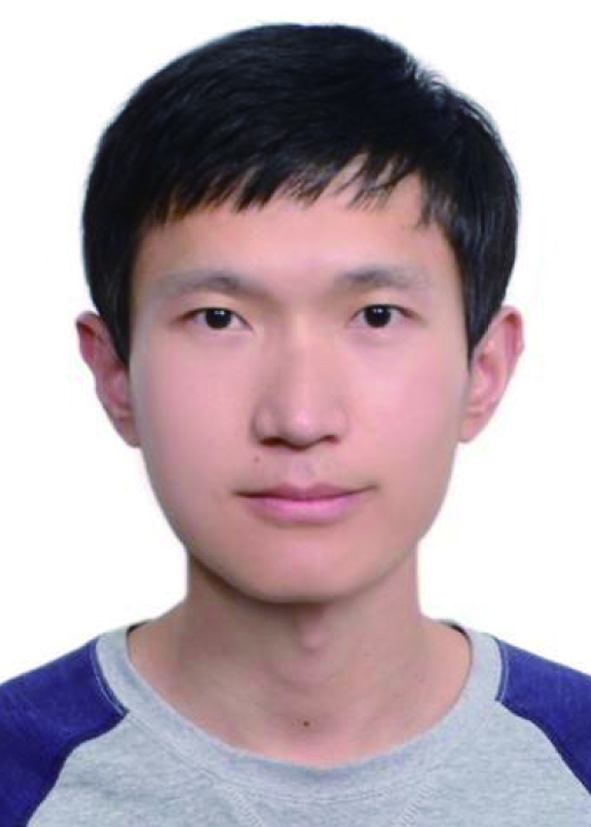 Wen-Long Ma is currently a professor at Institute of Semiconductors (IOS), Chinese Academy of Sciences (CAS) and University of Chinese Academy of Sciences (UCAS). He got his Ph.D. degree from IOS, CAS (2015) and his B.S. degree from University of Science and Technology Beijing (2010). He was a postdoctoral fellow at the Chinese University of Hong Kong (2015–2017), Yale University (2017–2019) and University of Chicago (2019–2020). His research interests include various issues in quantum technologies, such as quantum dissipation and decoherence, quantum measurement and control, quantum error-correction and fault-tolerant control, quantum sensing and quantum algorithms.
Wen-Long Ma is currently a professor at Institute of Semiconductors (IOS), Chinese Academy of Sciences (CAS) and University of Chinese Academy of Sciences (UCAS). He got his Ph.D. degree from IOS, CAS (2015) and his B.S. degree from University of Science and Technology Beijing (2010). He was a postdoctoral fellow at the Chinese University of Hong Kong (2015–2017), Yale University (2017–2019) and University of Chicago (2019–2020). His research interests include various issues in quantum technologies, such as quantum dissipation and decoherence, quantum measurement and control, quantum error-correction and fault-tolerant control, quantum sensing and quantum algorithms.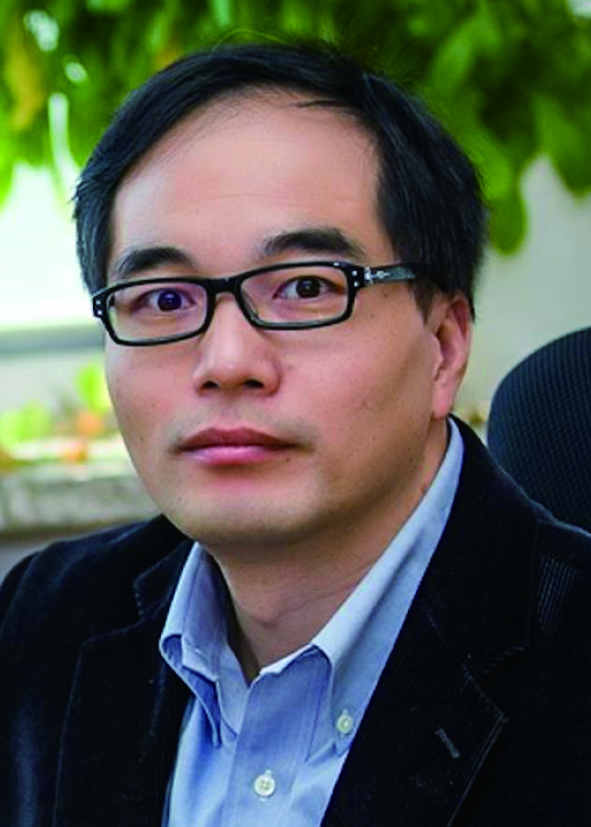 Jun-Wei Luo received his Bachelor’s and Master’s degrees from Zhejiang University in 2000 and 2003, respectively, and his Ph.D in condensed matter physics from the Institute of Semiconductors, Chinese Academy of Sciences in 2007. He is currently the director of the State Key Laboratory of Semiconductor Physics and Chip Technologies, Institute of Semiconductors, CAS. He focuses mainly on semiconductor physics of Silicon-based devices for post-Moore’s law technologies and discovered hidden spin polarization in inversion-symmetric bulk crystals.
Jun-Wei Luo received his Bachelor’s and Master’s degrees from Zhejiang University in 2000 and 2003, respectively, and his Ph.D in condensed matter physics from the Institute of Semiconductors, Chinese Academy of Sciences in 2007. He is currently the director of the State Key Laboratory of Semiconductor Physics and Chip Technologies, Institute of Semiconductors, CAS. He focuses mainly on semiconductor physics of Silicon-based devices for post-Moore’s law technologies and discovered hidden spin polarization in inversion-symmetric bulk crystals.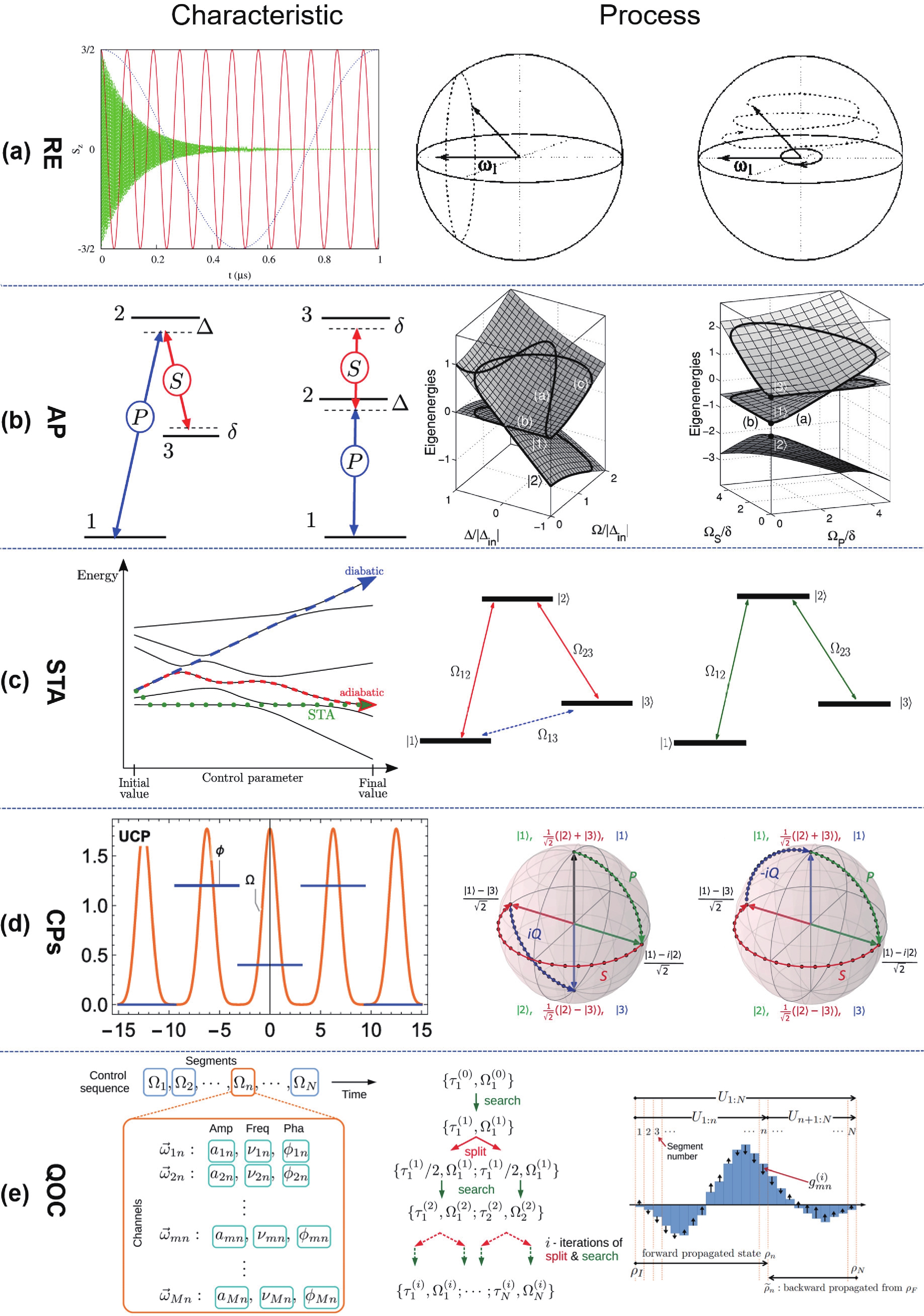
 DownLoad:
DownLoad:
